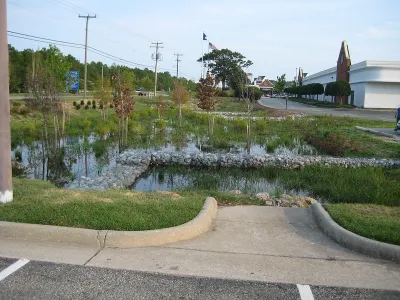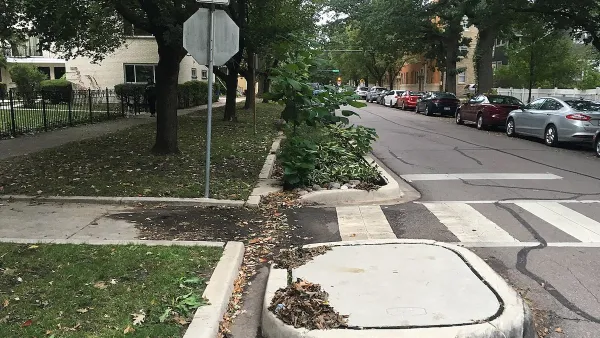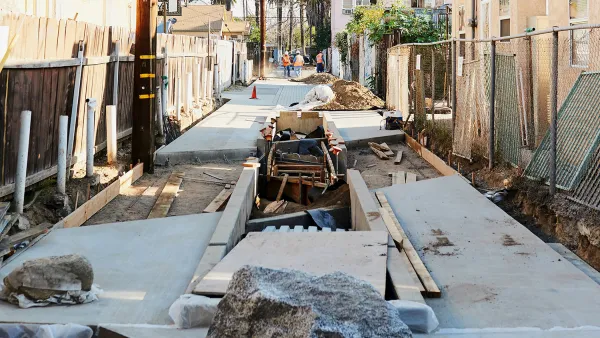How ‘sponge cities’ can protect residents and conserve water.

In an opinion piece in Next City, Franco Montalto touts the benefits of the ‘sponge city’ approach to flood mitigation that more and more cities are undertaking to protect their residents and infrastructure from catastrophic floods.
According to Montalto, “If this concept is to evolve into the new standard for urban design, city officials and developers will need to find ways to scale up and accelerate this work.”
Montalto explains that most U.S. stormwater management systems are not designed to handle all of the runoff created during a large storm. Now, cities are shifting to ‘green infrastructure’ to manage stormwater and direct it back into the ground rather than shuttling it out to rivers or oceans. This comes with its own challenges. “In the best cases, green infrastructure has been installed on publicly owned land and required on new or redesigned large-scale developments. It has proved much more challenging to incorporate green infrastructure on smaller, privately owned land parcels, which collectively make up a significant percentage of urban watershed areas.” In some areas, stormwater management is not even required as part of new development.
Montalto outlines some strategies cities can use to prevent flooding that include permeable asphalt, green roofs, rain gardens, and parks and green spaces designed to flood safely. Montalto also suggests ways to fund these efforts, pointing to collaborations between cities and nonprofit organizations as one option. “Cities could also offer incentives for retrofitting and scaling up existing stormwater management systems on private land. A trading system could be set up to sell the residual capacity to nearby property owners who lack onsite stormwater management opportunities.”
FULL STORY: Sponge Cities Are the Future of Urban Flood Mitigation

Analysis: Cybertruck Fatality Rate Far Exceeds That of Ford Pinto
The Tesla Cybertruck was recalled seven times last year.

National Parks Layoffs Will Cause Communities to Lose Billions
Thousands of essential park workers were laid off this week, just before the busy spring break season.

Retro-silient?: America’s First “Eco-burb,” The Woodlands Turns 50
A master-planned community north of Houston offers lessons on green infrastructure and resilient design, but falls short of its founder’s lofty affordability and walkability goals.

Test News Post 1
This is a summary

Analysis: Cybertruck Fatality Rate Far Exceeds That of Ford Pinto
The Tesla Cybertruck was recalled seven times last year.

Test News Headline 46
Test for the image on the front page.
Urban Design for Planners 1: Software Tools
This six-course series explores essential urban design concepts using open source software and equips planners with the tools they need to participate fully in the urban design process.
Planning for Universal Design
Learn the tools for implementing Universal Design in planning regulations.
EMC Planning Group, Inc.
Planetizen
Planetizen
Mpact (formerly Rail~Volution)
Great Falls Development Authority, Inc.
HUDs Office of Policy Development and Research
NYU Wagner Graduate School of Public Service



























